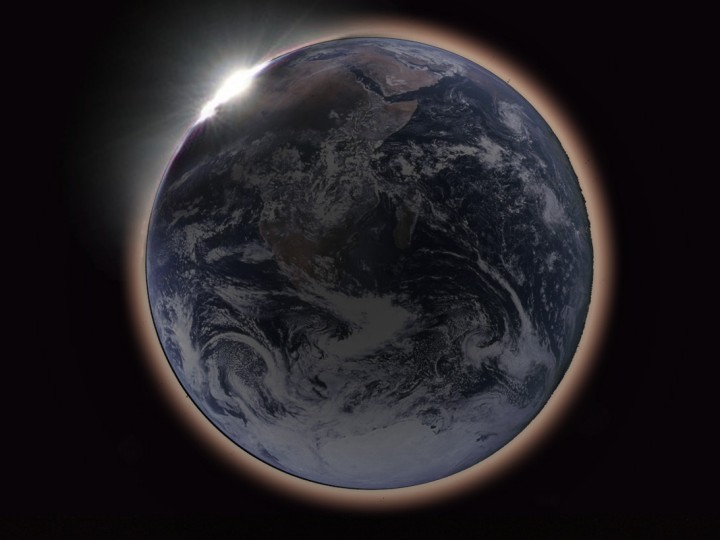
|
Credit & Copyright: Hana Gartstein
Explanation:
Parts of Saturday's (March 3)
lunar
eclipse will be
widely visible.
For example, skywatchers
in Europe, Africa, and western
Asia will be able to see the entire spectacle of the
Moon gliding through Earth's shadow,
but in eastern North America the Moon will rise
already in its total
eclipse phase.
Of course if you traveled
to the Moon's near side,
you could see the same event as a solar eclipse, with
the disk of
our
fair planet Earth completely
blocking out the Sun.
For a moon-based observer's view,
graphic artist Hana Gartstein
(Haifa, Israel)
offers this composite illustration.
In the cropped version of her picture, an
Apollo 17 image of
Earth is surrounded with a red-tinted haze as
sunlight streams
through the planet's dusty atmosphere.
Earth's night
side remains faintly visible, still
illuminated by the dark, reddened Moon, but
the disk of the Earth would appear almost four times
the size of the Sun's disk, so the faint corona surrounding
the Sun would be largely obscured.
At the upper left, the Sun itself is just
emerging from
behind the Earth's limb.
|
January February March April May June July August September October November December |
| ||||||||||||||||||||||||||||||||||||||||||||||||
NASA Web Site Statements, Warnings, and Disclaimers
NASA Official: Jay Norris. Specific rights apply.
A service of: LHEA at NASA / GSFC
& Michigan Tech. U.
Based on Astronomy Picture
Of the Day
Publications with keywords: eclipse - solar eclipse
Publications with words: eclipse - solar eclipse
See also:
